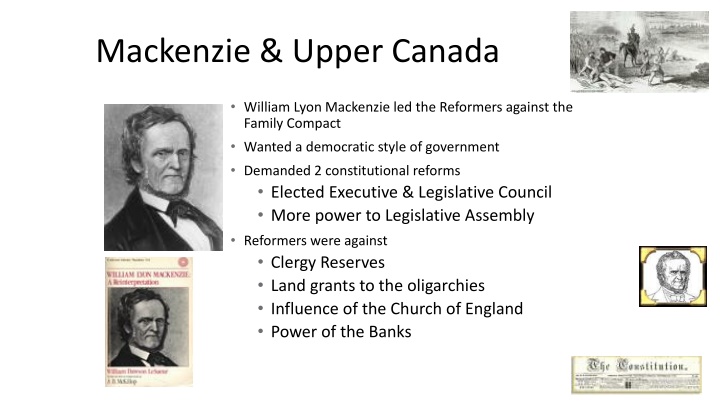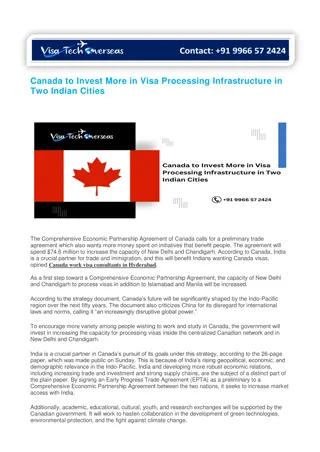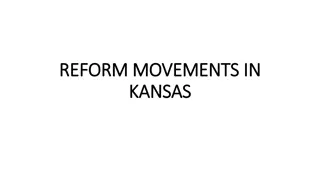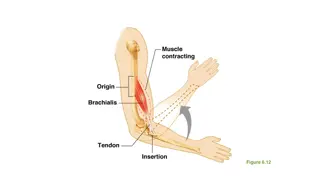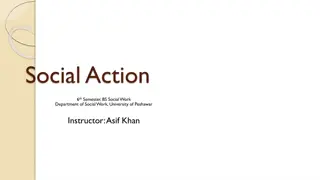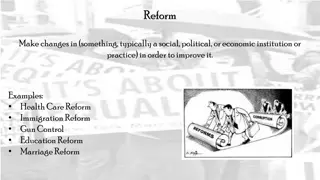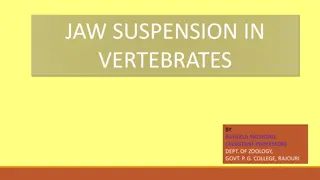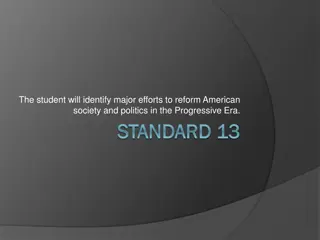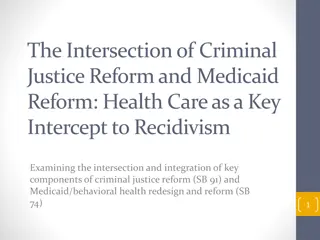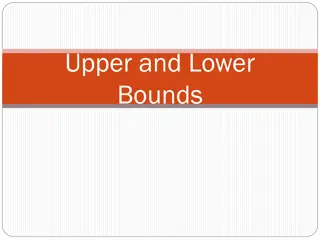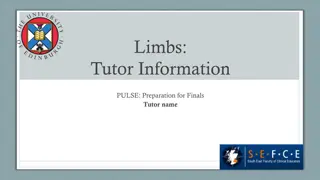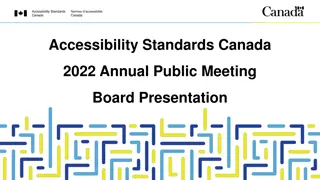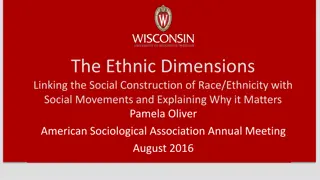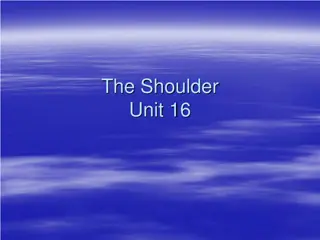Reform Movements in Upper and Lower Canada
William Lyon Mackenzie led the Reformers in Upper Canada against the Family Compact while Louis-Joseph Papineau led the Patriots in Lower Canada against the Chateau Clique. Both movements aimed for a democratic style of government, constitutional reforms, and more power to the legislative assembly. The rebellions in 1837, though unsuccessful, set the stage for Lord Durham's recommendations for uniting the two colonies into the Province of Canada and establishing a responsible government.
Download Presentation

Please find below an Image/Link to download the presentation.
The content on the website is provided AS IS for your information and personal use only. It may not be sold, licensed, or shared on other websites without obtaining consent from the author.If you encounter any issues during the download, it is possible that the publisher has removed the file from their server.
You are allowed to download the files provided on this website for personal or commercial use, subject to the condition that they are used lawfully. All files are the property of their respective owners.
The content on the website is provided AS IS for your information and personal use only. It may not be sold, licensed, or shared on other websites without obtaining consent from the author.
E N D
Presentation Transcript
Mackenzie & Upper Canada William Lyon Mackenzie led the Reformers against the Family Compact Wanted a democratic style of government Demanded 2 constitutional reforms Elected Executive & Legislative Council More power to Legislative Assembly Reformers were against Clergy Reserves Land grants to the oligarchies Influence of the Church of England Power of the Banks
Papineau & Lower Canada Louis-Joseph Papineau was a Legislative Assembly member & leader Had strong support for French land owning and culture Strong supporter of a democratic style of government Created the 92 Resolutions- making government more respectful of cultural differences (between French and English)
SUMMARY: Upper Canada William Lyon Mackenzie The Reformers Vs. Family Compact Lower Canada Louis Joseph Papineau The Patriots Vs. Chateau Clique Protesting against the Oligarchies control Desired a Democratic/Responsible Government Wanted less Church control More power to the Legislative Assembly Fair distribution of land (less land given to church and government)
1837 The armed Rebellion in Upper and Lower Canada Lower Canada An armed conflict between lower Canada Rebels (Patriotes) and the British Colonial Govt(defended by British Troops) The political leader was Joseph Papinea Patriotes were unsuccessful, lose to British Troops Papineau escapes to USA Most rebels were either arrested or killed for their actions of rebellion Upper Canada Rebellion against the British colonial govt (defended by British Troops) Political leader was William Mackenzie Rebels failed, rebellion was unsuccessful Mackenzie escapes to USA Punishing the rebels -Most rebels were either arrested or killed for their actions of rebellion -Some escaped to the USA
LORD DURHAMS REPORT -After the rebellions, Britain realized that changes to the governments in Lower and Upper Canada needed to be made -Lord Durham was appointed as governor-in-chief to figure out what the changes should be Two Major recommendations in his report are: 1.The two colonies should join and have one government the Province of Canada 2.The United Colony should have a responsible government Removing the power of the Legislative Council to make laws The executive council was not picked by the governor, but was chosen by leaders of the legislative assembly HIS RECOMMENDATIONS LEAD TO
The Act of Union, 1840 Lower and Upper Canada join into one colony The Province of Canada English became the official language Decreased French-Canadian hopes for equality under the British empire were A single government was created LEADS TO CONFEDERATION: ALL COLONIES IN BRITISH NORTH AMERICA UNITE AND BECOME INDEPENDENT FROM BRITAIN Responsible government was not granted by Britain
